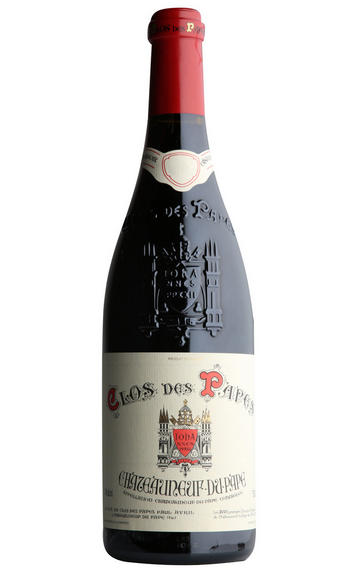
2012 Châteauneuf-du-Pape Rouge, Clos des Papes, Paul Avril & Fils, Rhône
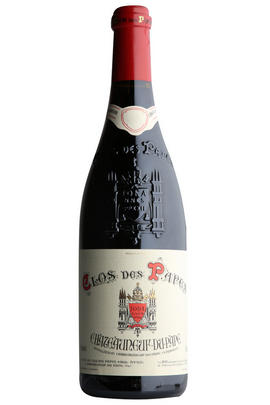
Critics reviews
Jeb Dunnuck - 14/09/2015
About this WINE
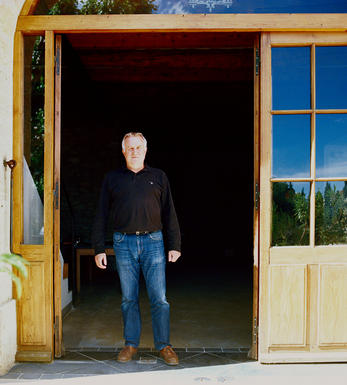
Paul Avril et Fils
With Vincent Avril at the helm, Clos des Papes is one of the most highly regarded properties; not only in Châteauneuf-du-Pape, but in the world of wine. This family estate has been certified organic for 15 years, with high attention to detail translating into impressively low production levels. Given that the vines here average over 50 years of age, they are firmly prepared and able to withstand many ordeals, including Mistral winds at 140 kilometres an hour, severe heatwaves and drought conditions. Thankfully, they were spared from the latter two in 2020.
When you visit this iconic estate, what stands out most is the complete focus on the vineyard and the absolutely hands-off approach in the cellar. The wines are amongst the purest expression of terroir you could ever wish to taste. There is a magic here that transcends the liquid in the bottle – Clos des Papes is a nonpareil of sheer brilliance.
Vincent is exceptionally happy with his ’20 wines, saying, “I can tell you ’20 is, I think, a great year that will stand the test of time. A very balanced, fine vintage with great freshness, silky tannins and good length in the mouth. Everything was climatically united, both for the red and the white. Currently, ’20 reminds me of ’05 and ’07.”
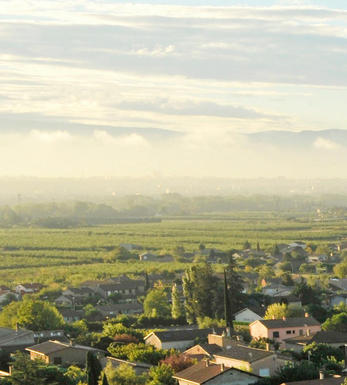
Châteauneuf-du-Pape
The most celebrated village of the Southern Rhône, Châteauneuf-du-Pape is the birthplace of the now indispensable French Appellation d’Origine Contrôlée system – imperfect though it may be. Compared to the Northern Rhône, the vineyards here are relatively flat and often feature the iconic galet pebbles – the precise benefits of which are a source of much debate. Minimum alcohol levels required by the AOC are the highest in France, but at 12.5% it is well below the natural generosity of Grenache, which only achieves its full aromatic potential when it is fully ripe and laden with the resultant high sugars. Syrah and Mourvèdre contribute the other defining elements in the blend, adding pepper, savoury spice and structure to the decadent Grenache. There are a further 10 permitted red grape varieties which can be used to adjust the “seasoning”. Of the five white varieties permitted, it is Grenache Noir’s sibling – predictably perhaps – Grenache Blanc, which dominates, though Roussanne shows a great deal of promise when handled well, notably at Château de Beaucastel.
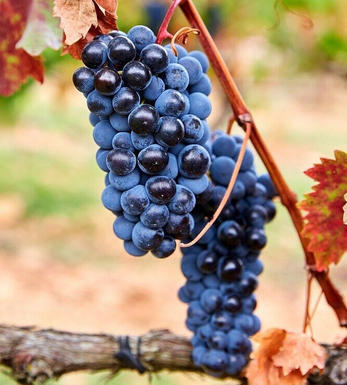
Southern Rhône Blend
The vast majority of wines from the Southern Rhône are blends. There are 5 main black varieties, although others are used and the most famous wine of the region, Châteauneuf du Pape, can be made from as many as 13 different varieties. Grenache is the most important grape in the southern Rhône - it contributes alcohol, warmth and gentle juicy fruit and is an ideal base wine in the blend. Plantings of Syrah in the southern Rhône have risen dramatically in the last decade and it is an increasingly important component in blends. It rarely attains the heights that it does in the North but adds colour, backbone, tannins and soft ripe fruit to the blend.
The much-maligned Carignan has been on the retreat recently but is still included in many blends - the best old vines can add colour, body and spicy fruits. Cinsault is also backtracking but, if yields are restricted, can produce moderately well-coloured wines adding pleasant-light fruit to red and rosé blends. Finally, Mourvèdre, a grape from Bandol on the Mediterranean coast, has recently become an increasingly significant component of Southern Rhône blends - it often struggles to ripen fully but can add acidity, ripe spicy berry fruits and hints of tobacco to blends.


Buying options
Add to wishlist
Description
Our 2012 Rhône Vintage Recommendation: Favourite Châteauneuf-du-Pape
Châteauneuf-du-Pape Rouge, Clos des Papes has a wonderfully deep, brooding and brambly depth to the nose and remains powerful throughout, but also opens up to include surprisingly floral and spicy red fruit notes – a magical combination of power and grace. Finishing with a fine pepper spice, this will be a special wine and its development will be a pleasure to track.
Guy Davies, Wine Team
Vincent Avril hadn’t completed his final blend, as usual, so we were treated to a captivating tasting of four cuvées that will make the final 2012 blend. The Grenache lending a beguiling silkiness; Syrah the colour and depth; Mourvèdre that southern spice: all will combine to make what has become one of the very finest Châteauneufs. By the by, anyone lucky enough to have the 2000 and 1999, which we tasted after, should be looking at these two with relish as they were showing supremely well – as indeed this ’12 will in about 2025.
Tom Cave, Cellar Plan Manager
It is hard not to be charmed by Vincent Avril, a man who loves to talk wine in general and Châteauneuf-du-Pape in particular. We always taste the constituent parts of the blend here before tasting the final blend. I can confirm that, once blended, the wine combines the beautiful nose from the Grenache, which reminded me of Chambertin, with the spicy power of the Mouvedre/Syrah dominated cuves in a way that really impressed. This is a classic example of Châteauneuf-du-Pape.
Matt Tipping, Private Account Manager Vincent’s instructive tasting these days takes us through four different cuvées, one with the most Grenache, the next two with more Syrah and Mourvèdre and the last one a facsimile of the final assemblage. Always the whole is greater than the sum of its parts, with inordinate complexity cushioned by silky purity and beautifully ripe tannins.
Simon Field MW, Rhône Wine Buyer
Just what is it that has made Clos des Papes the most sought-after address in this village? Vincent Avril has much to say, but the key parts of his exposition to me are exceptionally low yields, widely fragmented plots and a refusal to venerate Manon by introduction of a series of deluxe cuvées. The wine is therefore the definitive statement of a village that is celebrated for blended complexity, deliciously ironic in a man who appears to have a distinctly Burgundian temperament… in a good sense, needless to say!
wine at a glance
Delivery and quality guarantee